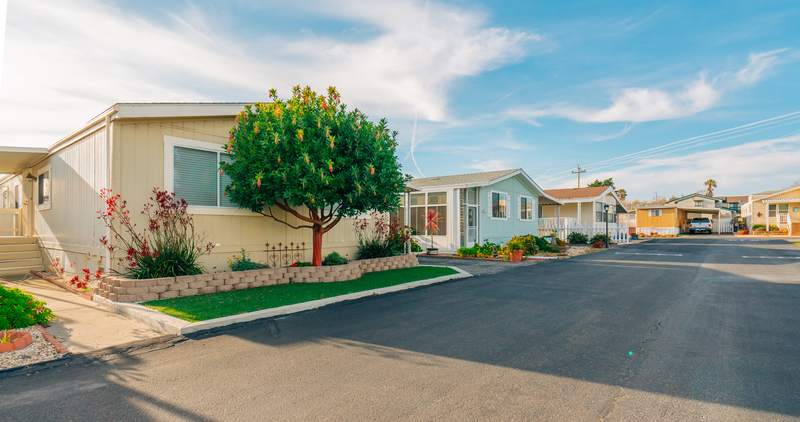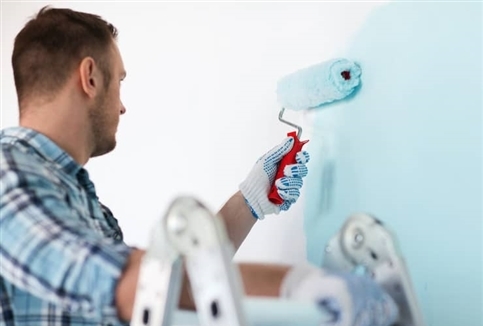Refinancing your manufactured home could help you meet specific financial goals, like lowering your monthly mortgage payment or tapping into some of the equity you’ve built in your house. But refinancing a mobile home often involves more steps than refinancing a traditional home. Exploring and learning more about manufactured home refinancing to help you navigate the process seamlessly.
Can You Refinance A Manufactured Home?
Yes, if you own a manufactured home with a mortgage, it’s often possible to refinance the mortgage. However, the process of refinancing a manufactured home loan is a bit different from refinancing a traditional home.
In general, you must own the land that the manufactured home sits on, and it must be attached to a permanent foundation.
Manufactured Home Vs. Mobile Home: How Will It Affect Your Refinance?
Manufactured homes are built off-site and transported to the final location. On the other hand, mobile homes are a type of manufactured home built in a factory prior to June 15, 1976. Factory-built homes made after this date are considered manufactured homes.
If you own a mobile home that was factory-built before June 15, 1976, most lenders are unwilling to (or can’t) offer you refinancing. But many can refinance manufactured homes built after this date.
Compare Refinance Offers From Verified Lenders:
Pros And Cons Of Manufactured Home Refinancing
Every financial decision has advantages and disadvantages to consider. Below is a closer look at both sides of this major decision.
Pros
Let’s start by taking a look at the benefits of refinancing your manufactured home.
- You can tap into lower monthly payments. When you refinance you may be able to lock in a lower monthly payment with the help of a lower interest rate or longer loan term. A lower payment could make a big difference to your budget.
- You could use your home equity for other expenses. If you pursue a cash-out refinance, you could walk away from the transaction with a significant amount of money in your hands. You might use the funds to pay off debt or cover a big purchase.
- You may be able to lock in long-term savings. If your new home loan has a lower interest rate than your current rate, you could save thousands in interest payments over the course of the loan.
Cons
Now for the drawbacks.
- You’ll have to pay closing costs. As with any home loan, you’ll have to pay closing costs to refinance.
- You could have an extended repayment timeline. If you choose a longer repayment timeline, you’ll be stuck paying off your mortgage for longer, meaning you’ll pay more in interest.
- You might end up with a higher monthly payment. If you are tapping into your equity, you’ll likely walk away from the transaction with a higher monthly payment. Depending on your situation, this could put stress on your monthly budget.
Ready To Refinance?
Get matched with a lender that can help you reach your financial goals.
Manufactured Home Refinancing Requirements
When it comes to refinancing, most lenders have some baseline conditions for the home itself. Here are some of the common requirements for your manufactured home to qualify for refinancing:
- The manufactured home must sit on land that you own.
- The home must be attached to a permanent foundation and meet the U.S. Department of Housing and Urban Development’s (HUD) standards.
- The manufactured home must be titled as real property.
- The home must be a minimum of 320 square feet and 12 feet wide.
- The manufactured home must have been built after June 15, 1976.
If the home isn’t affixed to a permanent foundation, it’s considered personal property, which means you’ll have fewer refinancing options.
In addition to having a manufactured home that meets the physical requirements to qualify for financing, your personal financial situation must meet the lender’s criteria. Most lenders are willing to work with borrowers who have a credit score of at least 580 and a debt-to-income ratio (DTI) of less than 43%. That said, the higher the credit score and the lower the DTI you have, the more likely you’ll qualify and could possibly get better terms.
View Your Refinancing Options
Find a refinance lender that will work with your unique financial situation.
How To Refinance A Manufactured Home With A Mortgage
If refinancing your manufactured home is the right path for your finances, use the following steps to work through the process.
1. Confirm That Your Home Is Eligible
First things first, it’s critical to confirm that your manufactured home meets some basic refinancing criteria.
For example, you’ll need to own the land it sits on, which means you can’t lease the land. Additionally, the home must have been built after June 15, 1976, and be permanently affixed to the land.
2. Pick The Right Loan For Your Refinance
If your manufactured home meets the basic criteria for a refinance, then it’s time to consider your loan options. Below is a look at some of the loan options to consider:
- Federal Housing Administration (FHA) Streamline refinance: If you have an existing FHA home, the FHA Streamline refinance offers a faster and more affordable refinancing process.
- Department of Veterans Affairs (VA) Streamline refinance: If you currently have a VA home loan, then an IRRRL or VA Streamline refinance could be an option.
- U.S. Department of Agriculture (USDA) Streamline refinance: Homeowners with a USDA manufactured home loan could refinance through this streamlined option.
- Conventional home loan refinance: Unlike government-backed home loan options, conventional refinancing often comes with slightly higher credit score requirements and qualifying criteria. But you may be able to save on closing costs and fees or private mortgage insurance (PMI) if you refinance with a conventional loan.
The right loan type will vary based on your unique situation. For example, veterans might find the best option through a VA Streamline refinance (or even a standard VA refinance), but homeowners with a higher credit score might opt for a conventional loan.
3. Get In Touch With A Mortgage Lender
When you refinance, you can choose to work with your current mortgage lender or seek out a new one. For many, it’s a good idea to start with your current mortgage lender to see what rates and terms they can offer. From there, you can shop around to make sure you are getting the best deal for your unique situation.
4. Apply For The Loan
Once you’ve decided on a lender, it’s time to apply for the refinance. Every lender has slightly different criteria for finalizing the loan. But be prepared to submit a lengthy application with details about your financial situation.
The process should feel similar to when you closed on your original home loan. You’ll need to provide documents like pay stubs, bank statements, W-2s, 1099s and other financial information.
5. Finalize The Loan
If you are approved for the new home loan, it’s time to finalize it.
As with your original home loan, you can expect to pay between 2% – 6% of the loan amount in closing costs. Some of the closing costs you might face include a new appraisal, mortgage discount points and other fees. You can find a full breakdown of these costs in your Closing Disclosure document.
After you pay your closing costs and sign all the paperwork, your original home loan will be replaced with this new home loan. With that, you’ll start making payments to the new home loan immediately.
Mobile And Manufactured Home Refinances: FAQs
Here are answers to some of the more common questions about manufactured home refinancing.
The Bottom Line: You Can Refinance A Manufactured Home Loan
If you own a manufactured home that is permanently attached to land that you own, then it’s possible to qualify for a refinance. Moving forward with a refinance could help you lock in lower monthly payments or tap into the equity you’ve built in the home.
What’s Your Goal?
Buy A Home
Discover mortgage options that fit your unique financial needs.

Refinance
Refinance your mortgage to have more money for what matters.
Tap Into Equity
Use your home’s equity and unlock cash to achieve your goals.

Miranda Crace
Miranda Crace is a Staff Writer for Rocket Companies, bringing a wealth of knowledge about mortgages, personal finance, real estate and personal loans for over 10 years. Miranda is dedicated to advancing financial literacy and empowering individuals to achieve their financial and homeownership goals. She graduated from Wayne State University, where she studied PR writing, film production and film editing. In her spare time, Miranda enjoys traveling, actively engages in the entrepreneurial community, and savors a perfectly brewed cup of coffee.












